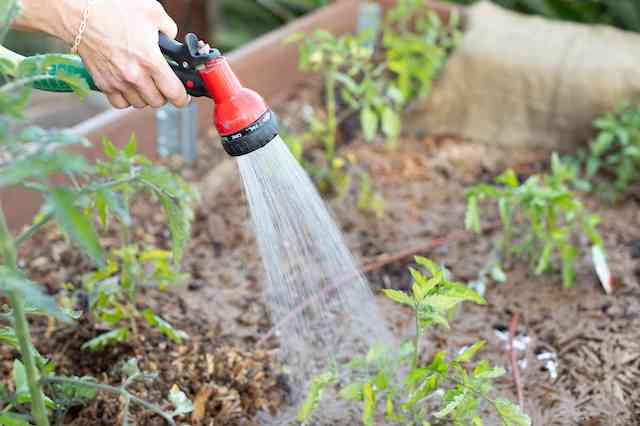When you have worked hard to cultivate a beautiful garden, it can be tempting to impulsively eradicate any insects or other small pests that are causing problems for your plants. However, it’s important to remember that while some bugs are definitely enemies of your garden, others can be “friends”. It’s vital to know what you’re dealing with before acting. Make sure the little critters you’re seeing are actually eating or harming your plants in some way. If it turns out they are “bad bugs”, then it is time to figure out the best way to get rid of them in the least toxic way possible. A great way to do this is to use “IPM” (Integrated Pest Management). IPM relies on cultural, physical, biological, and chemical tools that target the problem in a safe way.

How to use IPM to rid your garden of bugs:
- What Pest Level is Acceptable?
Some people want exactly ZERO bugs in their garden. Others might not mind so much as long as they aren’t doing great damage to plants and flowers. If you are ok with a little cosmetic damage, you may just want to let nature take its course. But if there is a large infestation, action is warranted.
- Take Preventative Action
Try attracting beneficial insects that will help minimize pest issues. For example, to keep grasshoppers away you can plant marigolds, calendula, or sunflowers that will attract robber flies, which attack grasshoppers.
- Observe Your Garden Frequently
Go out weekly to look for pests in your garden. Keep an eye out for common pests such as aphids and Japanese Beetles, but also look for others that are not so common, like cucumber beetles in your vegetable garden or sawflies on your roses. The sooner you know you have a problem, the easier it will be to keep damage at bay.
- Try Physically Removing Them First

You might be surprised to discover that something as simple as a strong blast of water from your garden hose will be enough to rid you of soft-bodied pests like aphids pretty quickly. For larger pests like Japanese beetles or tomato hookworms, simply put on some gloves and knock them off your plants into a bucket of soapy water. If you see “webs’ in the leaves of trees or shrubs, sweep them away or cut away branches where infestations have taken place.
- Bring Out the Big Guns (Biological Warfare)
Biological controls consist of any living being that is deadly to pests. For example, sawflies can be treated with Spinosad, a natural chemical made by soil bacteria that is toxic to insects, but not to pets or people. And if you find Japanese beetle larvae in your lawn, it can be controlled by Milky Spore, which is a natural fungus that attacks grubs. In addition, you can use “good bug” predators to fight unwanted insects such as ladybugs and lacewings that will gobble up aphids.
- Next Step – Chemical Controls

If the above steps have not worked to rid your garden of unwanted pests, it’s time to try a pesticide. There are many to choose from, including some organic ones, so do your research to find the one that’s right for you. You may want a broad-spectrum insecticide that will kill just about any bug, or if you have a very specific problem, a selective one that only kills a certain kind of insect. Whatever you end up choosing, read the label carefully to be sure it is right for treating the bug issue you have. Pay close attention to warnings, especially if you have pets that go out in your yard.
The best way to handle pests in your garden is to use a combination of the above steps to deal with them as needed. Don’t jump straight to using chemicals until you know that you have a problem that warrants that action. Remember that most bugs you see in your garden are not problematic and can be left alone.
Are you thinking of buying a home or selling your current home in New River Valley, VA? Then it is time to contact, Desi Sowers, your New River Valley, VA real estate resource! Give her a call today at 540-320-1328!
Photo credits: loveproperty.com, buffalonews.com, thespruce.com
